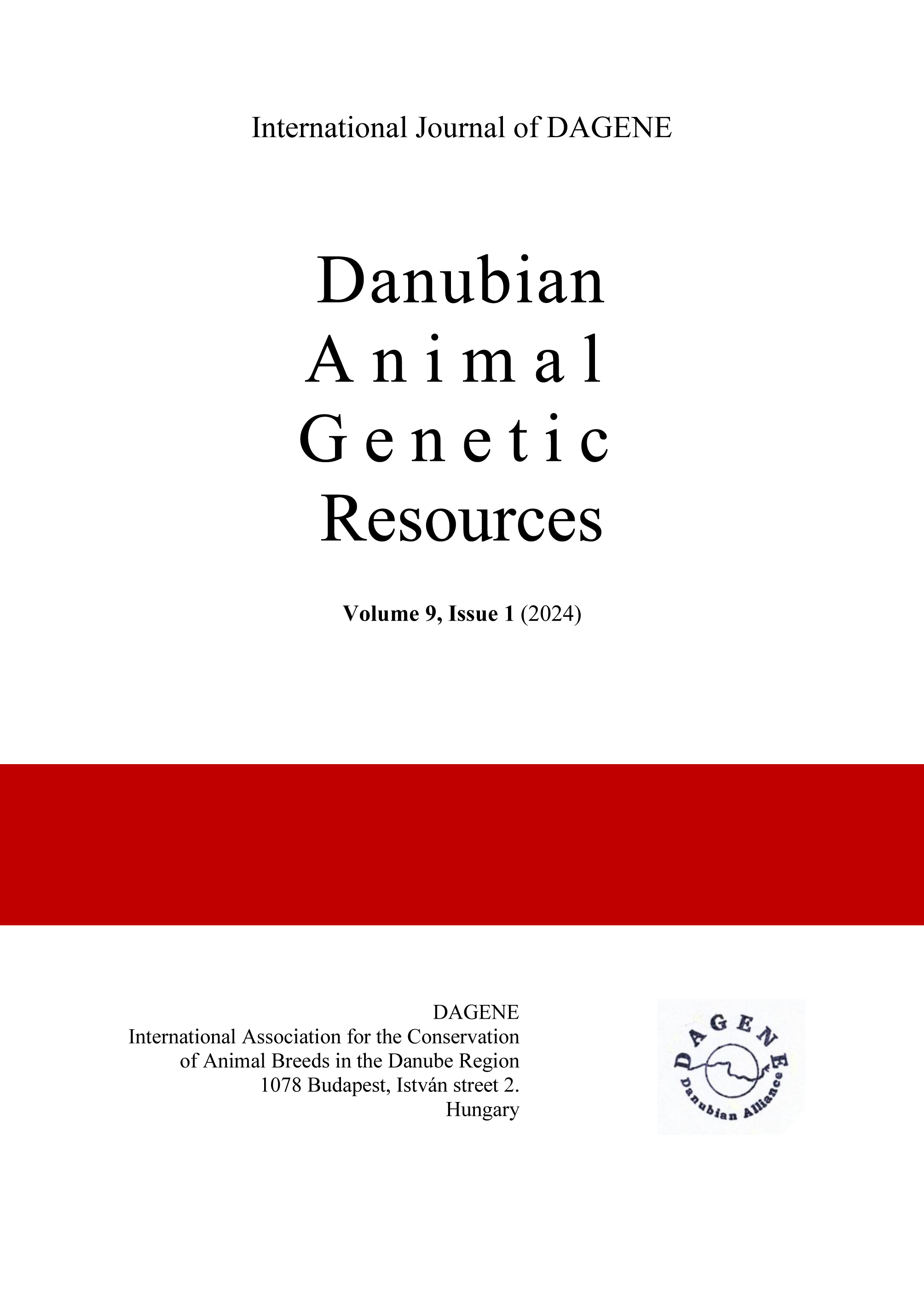Results of an expedition survey on population of rare, aboriginal, local and endangered Brown Carpathian cows
Abstract
From the expedition survey of the cow’s population, it appears that 7 breeds and genotypes of cattle are bred in Transcarpathia, part of the Ukrainian Carpathians. The materials presented in the work and their analysis show that during the years 1911-2023 there were changes in the breed composition and numbers. The state of distribution, the number of breeding stock of one of them - a rare, aboriginal, local and disappearing brown Carpathian breed is currently insufficiently studied. From a scientific point of view it represents a valuable object of preserving the biological diversity of cattle and establishing the history of the development of cattle breeding. From a practical point of view - with low-cost production technologies, it provides high-quality milk and meat to the local population, the stability of ecosystems and the biosphere as a whole. It provides also the sustainable development of the regional communities and international cooperation. In the current and future global warming and energy crisis, this breed is suitable for operation under the conditions of application of new "Green Architecture" technologies recommended by the European Commission, which fundamentally change traditional approaches in dairy farming. The results of our research will help clarify the status of the brown Carpathian breed, the number of cows and the breeding area as well as draw attention to the problems of implementation of the provided protection and conservation measures, their financing mechanisms.
References
Brown Swiss news. The European Brown Swiss journal, September 2020, 2021, 2022, 2023. - P.6 - 7.
FAO (2010): Development of national strategies and action plans in the field of animal genetic resources / FAO Commission on Genetic Resources for Food Production and Agricultural Management. - Rome, 71 p.
FAO (2011): Breeding strategies for sustainable management of animal genetic resources / FAO Commission on Genetic Resources for Food Production and Agricultural Management. - Rome, 148 p
I.V. GUZEV The program for preserving the gene pool of the main species of agricultural animals in Ukraine for the period until 2015. - Kyiv, 2009. – 131 p.
IRENEI, O. – KONDRATOVYCH, M. (1925): History of Subcarpathian Rus for the people. Second revised edition. Uzhgorod. No. 76 c., 35–37.
KRAWCZYK, W. – PARAPONIAK, P. – SZEWCZYK, A. (2021): Strategia ,,Zielonej architektury” we Wspolnej Polityce Rolnej na lata 2023 - 2027 / Wiadomosci zootechniczne. Information bulletin. - Kraków. – No. 1 (305), 45–51.
State breeding book of brown Carpathian cattle - Kyiv. - Harvest - Volume 8, 1992. p. 125.
STOYKO, S.M. – TSURYK, E.I. – TRETYAK, P.R. etc. (1982): Morphological structure of beech primeval forests. Flora and vegetation of the Carpathian Reserve. - K.: Naukova Dumka, p. 178–190.
TERPAY, V.P. (2013): Scientific support of selection and breeding work and reproduction of agricultural animals / Problems of the agro-industrial complex of the Carpathians. Interdepartmental thematic scientific collection. Velyka Bakta. 22, 162–168.
TERPAY, V.P. (2021) Interim results of the implementation of the "Concept for the preservation of the local brown Carpathian breed and the development of dairy cattle breeding in Transcarpathian region until 2025" // Natural-resource and ethno-cultural cross-border potential of the Hutsul region in Ukraine and Romania: problems of conservation and sustainable development. Mate. international of science-practice conferences. Rakhiv, November 25, p. 220–233.



